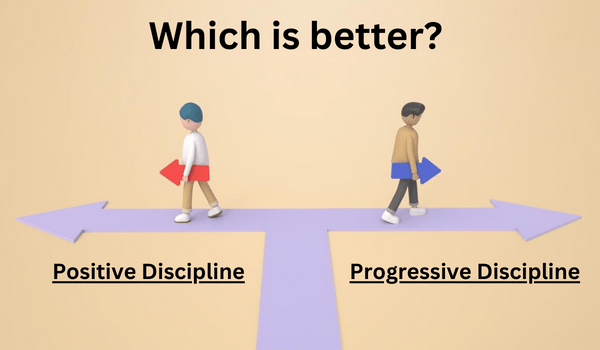Discipline in the workplace is crucial to maintaining a positive and productive work environment. When employees fail to meet expectations or violate company policies, it is important for employers to take appropriate action to address the situation. However, the manner in which the discipline is administered can have a significant impact on employee morale and performance.
Sujiv Nair, global CHRO, Re Sustainability, provides valuable insights based on his extensive experience in managing a large workforce across the globe. He emphasises the importance of having a combination of both positive and progressive disciplinary policies, as different situations may require different approaches.
“If counselling fails to correct the behaviour, the organisation should then move on to progressive disciplinary actions.”
Sujiv Nair, global CHRO, Re Sustainability
In his opinion, having a documented grievance policy is essential in any organisation. It provides a clear and consistent approach to dealing with any misconduct or grievance that may arise.
Positive discipline
Positive discipline is an approach that focuses on encouraging and reinforcing positive behaviour rather than punishing negative behaviour. This approach is rooted in the belief that employees are more likely to respond positively to positive reinforcement and support than to punishment or criticism.
This approach involves regular feedback and recognition of employees’ achievements, as well as providing coaching and support to help them improve their performance. Positive discipline may involve setting goals, providing regular feedback, and offering rewards or incentives for meeting or exceeding expectations.
Progressive discipline
Progressive discipline is an approach that focuses on punishment for negative behaviour. This approach typically involves a series of increasingly severe disciplinary measures, such as verbal warnings, written warnings, suspensions and termination. Progressive discipline is based on the belief that negative consequences are necessary to deter future violations and maintain order in the workplace.
The purpose of progressive discipline is to enforce compliance with company policies and procedures and to hold employees accountable for their actions. This approach is often seen as a last resort after other attempts to correct behaviour have failed.
“In the workplace, it is important to approach mistakes with a nurturing and positive attitude. It is important to understand the context of the individual and provide a conducive environment for growth and improvement.”
Atul Mathur, executive VP, Aditya Birla Capital
Atul Mathur, executive VP, Aditya Birla Capital, emphasises that, “In the workplace, it is important to approach mistakes with a nurturing and positive attitude. It is important to understand the context of the individual and provide a conducive environment for growth and improvement.”
He says that mistakes can often be made unintentionally or due to a lack of information or capability.
“It is not productive to constantly point out every mistake, as it can create an environment of fear and discomfort. Instead, coaching and mentoring can be helpful for individuals who require assistance,” believes Mathur.
According to Mathur, it is important to remember that progressive discipline should be used as a last resort and only for individuals who intentionally and repeatedly make mistakes. Overall, a positive and supportive approach to discipline is more effective in promoting growth and productivity in the workplace.
Which approach is more effective?
When it comes to workplace discipline, both positive and progressive approaches have their advantages and disadvantages. While positive discipline focuses on reinforcing positive behaviour, it may be seen as overly lenient by some employees. On the other hand, progressive discipline may be seen as punitive and authoritarian, leading to resentment and low morale among employees.
In general, research suggests that positive discipline is more effective in the long term, as it fosters a positive work culture and encourages employees to take ownership of their work. Positive discipline can lead to increased productivity, better communication, and higher job satisfaction among employees.
“Ultimately, finding the right balance between positive and progressive discipline requires an understanding of the specific situation and the employees involved.”
Tanaya Mishra, VP and head of HR, Endo International
However, there may be situations where progressive discipline is necessary, such as in cases of serious misconduct or repeated violations of company policies. In these cases, employers may need to take swift and decisive action to maintain order in the workplace.
Tanaya Mishra, VP and head of HR, Endo International, says that when the mistake is repeated continuously and intentionally, then progressive discipline may be necessary. In such cases, a formal disciplinary action such as a written warning or suspension may be needed. This can help to set a precedent and establish a culture of accountability within the organisation.
It is important for companies to communicate their standards of conduct and ethics clearly to their employees. This can be done through a code of conduct or business ethics policy. By doing so, employees are aware of the expectations and consequences of their actions.
“Ultimately, finding the right balance between positive and progressive discipline requires an understanding of the specific situation and the employees involved. It is also important for managers to be trained in how to effectively counsel employees to address issues before they escalate,” she advises.
Ultimately, the most effective approach to discipline in the workplace will depend on the specific situation and the needs of the organisation. Employers should consider the culture of their workplace, the goals of their discipline programme, and the specific behaviours they are trying to address while determining the best approach to discipline.
Nair says, “This ensures that employees are aware of what is expected of them and what actions will be taken if they violate any policies.”
He points out that if counselling fails to correct the behaviour, the organisation should then move on to progressive disciplinary actions.






